2240 kilometers on snowmobiles
Andrei Nikolaevich Tupolev, who worked at the Central Aerohydrodynamic Institute (TsAGI), was looking for new materials that could lighten the weight of the aircraft. The scientist proposed to use a new alloy instead of wood - duralumin (it was then called its chain-mail aluminum in honor of the Kolchuginsky Metallurgical Plant). But at this time there were many opponents of new methods. To prove the urgent need for the transition to the construction of aircraft from duralumin, Tupolev decided in practice to show the prospects of his direction in development aviation. A defense order for the manufacture of snowmobiles helped the inventor.
In general, the technical task, as Tupolev later recalled, was that “snowmobiles should have been easy and free to move along the snowy expanses of Russia. Pass wherever an ordinary village cart can pass. The weight of the apparatus must be so small that two people can easily pull it out of any position. Lightness should not be bought by lowering reliability, but by creating the most rational, simple scheme and design implementation. ”
It was created several models of snowmobiles. In February, 1923, the designer Tupolev, made a qualitatively new leap: ANT-III snowmobiles were made. They became the country's first all-metal sleigh of aluminum mail needed for aircraft construction. On their basis, another, improved model of snowmobiles of the type - AHT-IV was created. They have become the most successful option.
Later, recalling this time, Tupolev wrote: “First of all, snowmobiles were built, the hull of which works in approximately the same conditions with the aircraft fuselage; long-term tests of these sleds showed that the material behaves quite naturally in the design, without any surprises ".
When the snowmobile passed several types of factory tests, they were sent to the field, the most difficult, tests. At that time, auto races were popular. Therefore, it was decided to arrange the mileage of Soviet snowmobiles 2240 kilometers in length. Moreover, these tests were held in the form of competitions between the TsAGI machines and snowmobiles, made by specialists from the Automotive Research and Automotive Institute (NAMI). Also in the race took part the snowmobiles I-3 and “Sea Air Base”, made on the Baltic Sea base.
The honor of us defended the snowmobile NRB-V. In turn, TsAGI presented its new development - AHT-IV (detailed technical characteristics of each model are given in the photo).
NAMI representative Professor N.P. Brilling believed that "wooden and metal sleds in terms of strength and weight are equivalent." How much this statement is true, had to find out during the competition.
As eyewitnesses of those events recall, “there was very little snow on the highway in winter. When the sleighs run by A.N. Tupolev and the second smaller ones led by V.M. Petlyakov drove away from Moscow, the cars stopped falling completely. And the highway ceased to be like a highway, turning into a road with deeply grooved peasant sleighs. The noise of engines scared oncoming horses. From fear they sometimes so sharply rushed to the side that passengers fell out of the sledge.
The routing ring of the 1927 aerial run, of the length of 2240 kilometers, began in Moscow. Then the path lay through the cities of Klin, Tver, Torzhok, Verkhniy Volochek, Valdai, Nizhny Novgorod, Chudovo. And so - to Leningrad. From there it was necessary to reach the old Ladoga, the cities of Tikhvin, Beasts, Vesyegonsk, Cherepovets, Vologda. After Vologda, a significant part of the journey has already been passed, but it was still necessary to drive to Moscow on the sleds of the city of Gryazovets, Danilov, Yaroslavl, Rostov Veliky, Sergievo.
This path was dangerous.
The first 715 kilometers: all is well
The first part of the journey from Moscow to Leningrad, stretching for 715 kilometers, was not particularly interesting, since the road is more or less satisfactory: the highway, on which the cars were already tested during the last year’s run, is quite well known. Daily hauls here were about 300 kilometers, with an average technical speed of the sleigh about 35 km per hour. In general, this stage was introduced into the run only in order to give the machines a “smoothness” to Leningrad and, if possible, to secure themselves from minor breakdowns in the further, most difficult part of the journey.
The only interesting part of this part of the route was the Valdai Hills, with its significant ups and downs. But the machines coped with it without any tension, just like last year.
Leningrad-Staraya Ladoga: the first losses
The testers did not expect anything special from the next section, directly beyond Leningrad, since it ran along the Shlisselburg Highway and did not promise anything new. In practice, it turned out more. At first, the snow cover turned out to be so insignificant that in some places the sleds scraped gravel on the highway. This significantly delayed the movement of cars and forced to go with great caution. And then the picture changed dramatically, the snow layer turned out to be so thick that, instead of a smooth highway, in front of the testers lay a continuous pile of bumps and snow drifts with such sharp folds that the cars barely touched the bottom of the steep transverse rollers.
It was also not possible to bypass the most difficult places of the virgin lands, since the road was almost entirely enclosed by wickers that did not allow to get off it.
It was especially difficult in villages where the only thing left of the road, in the correct sense of the word, was a memory, so deplorable that at times there was doubt about the ability of machines to cope with obstacles. But the snowmobiles, built in NAMI and TsAGI, turned out to be at the height and never stayed even in the most difficult places.
The situation was different with the Leningrad machines built in artisanal order, especially with the Baltic Sea hydro-base machine (I-3 snowmobile), which has a large size and considerable weight. Having traveled only fifty kilometers from Leningrad, it was heavily stuck in the snow because of the bursting side member spar. And later, behind a few hundred kilometers from Moscow snowmobiles, it finally broke down. The same happened with the second Leningrad machine of the pilot Ivanov (“Sea Aviation Base”): the worn out engine did not allow to continue the competition further.
How difficult was the path on this site can be judged by the fact that, without spending any time on non-production stops along the way, the cars covered the entire 114 kilometer a day and travelers had to spend the night in Staraya Ladoga, not having reached a long distance stage. However, on this stage, the competitors were convinced that there were no such difficulties that could stop the snowmobile.
Old Ladoga-Tikhvin: ice trap
Having received information that the next section of the road beyond Staraya Ladoga, is replete with the same bad roads as it has just been covered, and perhaps even worse, it was decided to avoid them and go to the city of Tikhvin along the channel of the Volkhov River, the Catherine’s connecting channel. The low air temperature (18 degrees below zero) allowed the snowmobiles to move easily along the snow packed on the river ice.
Immediately the cars developed excellent speeds, which averaged about 60 kilometers per hour for that day. Snowmobiles literally flew along the Ekaterinburg channel, straight as an arrow and even as a tablecloth. Too thin layer of snow and fear of breaking skis on bare ice did not allow to keep the maximum speed all the time. But where the snow cover allowed it, the cars went at a speed of about 100 kilometers per hour in an aerodynamic direction.
Suddenly, on a steep bend, the testers saw a high dam, the existence of which people had not been warned in advance. They were on the ice, which thawed heavily due to the constant fall of water from the airlock. The ice under my feet immediately began to fall. Under the rear skis of one of the machines, the ice also suddenly began to fall. And in these snowmobiles was Tupolev. But the car still managed, although with difficulty, to turn around and go back onto solid ice. But the snowmobiles were squeezed in a narrow channel of a river with very steep banks. It was necessary to decide: either to go back a few tens of kilometers and there, near some village, to climb the sloping shore along the road, or to try here to climb the steep slope of the shore without any road.
Scouts were sent. They fell into the loose top layer of snow and slid down the slippery crust that was under this top layer. It was decided to return. But Tupolev suggested trying to get to the shore right away after all, although there was little hope of success.
What a jubilation it was when the cars, after a small acceleration, which could be done in the narrow bed of the Tikhvinka River, without any particular difficulty went to the high bank. This finally confirmed the testers in the reliability of their machines and they further boldly continued their way further along the ravines and virgin lands, bypassing the ill-fated dam. On this day, about 250 kilometers were traveled at an average speed of about 60 km / h.
Tikhvin-Ustyuzhna: TsAGI car is easier and better
The next stage was the beginning of the most difficult part of the journey. The increase in air temperature and the complete absence of snow crust lowered the technical speed of the machines. However, it was not this that was the main reason for the delay in movement and the fact that the operational daily speed dropped to 10 kilometers - the reason for this was the very narrow forest roads along which horse-drawn carts moved. Not always having the opportunity to get around these carts of virgin lands, snowmobiles were forced to lose a lot of time when meeting with them. What a surprise caused ordinary viewers view completely unknown cars!
In addition, the nature of the snow cover strongly delayed the car: when they got onto the roadside snow, completely untouched, the skis plunged so deeply into the loose surface that very often they had to get out of the sled and pull them out. Especially deep was the immersion of skis at the head machine NAMI. This was its main defect: when driving, the tail of the car immediately abruptly sank in the snow. Whereas the TsAGI machine, despite being overloaded with an extra passenger, easily overcame difficult areas.
Ustyuzhna-Cherepovets: the first breakdowns
Testers thought they had passed the most difficult part of the path. But, as it turned out, this area turned out to be only flowers compared to the berries, which the travelers got into the next day on the Ustyuzhna-Vesegonsk-Cherepovets stretch. With the same unpleasant snow cover as the day before, the forest so strongly surrounded the already narrow road that every now and then we had to stop and resort to using an ax to cut down the low-hanging branches. And yet, despite the utmost care, the screws could not be protected from impacts. Then the screws had to be repaired.
Immediately outside the city, Veshegonsk made an unplanned stop: it was necessary to repair a completely tattered and crumpled forging on the blades. The tree in it turned into dust and did not hold the structure at all. The soldering and repair of the shackles took a lot of time in the field, so the rest of the way had to be done at night. Here, the testers faced another problem: the batteries, which were already discharged in the previous stages, did not give any energy at all - the cars moved forward in a very weak light. This made it impossible even at relatively good sites to catch up with the time lost in endless forest thickets.
As it turned out, forest roads without thorough clearing are completely unsuitable for the movement of snowmobiles.
In addition to forest obstacles, the path was blocked by endless fences with very low and narrow gates. Far from all of these gates, the cars managed to squeeze through, and they had to carry the cars through these hedges. If this did not work, then I had to take an ax in my hands and cut a path for myself. All these difficulties led to the fact that only 16 kilometers were covered in 125 hours. The average technical speed on this stage was not determined, since the stops were so frequent, and people were so exhausted that it was no longer a matter of time.
Cherepovets-Vologda: a crippled mechanic
Despite the fact that travelers arrived in Cherepovets at about one o'clock in the morning, the next day all the cars started at nine o'clock in the morning: this rush was due to the fact that by the next day - the holiday of the Red Army - it was necessary to be in Vologda. And from the local roads could be expected any trick. But this time, the fears were not justified - the road turned out to be tolerable, although rather thoroughly beaten.
Even the obstacle, from which they also waited for trouble - the mountains, did not delay the sledding. Although local peasants warned about road difficulties, it was said that the steepness of descents and ascents in several places makes them spend several hours sometimes to overcome one or two miles. But snowmobiles coped with these descents and ascents with amazing ease.
The car NAMI took the steepest and longest lift not even at full throttle. It was somewhat harder for the TsAGI car, which had a little naughty engine that day, but it did not linger. Essentially, the most interesting part of the journey from the point of view of testing machines ended with this stage.
Further to Yaroslavl, a more or less tolerable road went from Vologda, and there was quite a good highway from Yaroslavl. On the very first day of the movement on these roads 320 kilometers were overcome, despite the large number of carts on the road, and the inevitably associated delays. The unexpected happened on the road: a screw was crippled by a mechanic. He had to be tied up and delivered to the town of Gryazovets, which was located away from the main route, in 12-15 kilometers.
Results: speed, fuel, breakdowns
The average ground speed over the entire run was about 20 km per hour. The highest technical speed was 90 kilometers. The greatest daily haul for the entire time of travel was 325 kilometers, and the smallest - 125 kilometers. The first result was brilliant. As for the fuel and oil consumption, which determines the economic side of the matter, it turned out to be lower than planned in the calculations. At the very beginning of the movement from Leningrad, the NAMI car revealed one major drawback - great difficulty in managing, which arises due to the large length of the guide ski. Were also identified shortcomings in the work of the motor: the motor Salmson mounted on the sled NAMI always cooled down.
The snowmobile TsAGI AHT-IV Tupolev constructions safely reached the finish line. Tests of snowmobiles in the field showed all the advantages of the new material and made it possible to use it already in the manufacture of aircraft. But this is completely different. story.
Subsequently, snowmobiles were displayed at the International Aviation Exhibition held in Berlin in 1928 year. They were used in the protection of borders, in the transport of sick, wounded, civilian passengers. And during World War II, snowmobiles delivered weapon and ammunition.
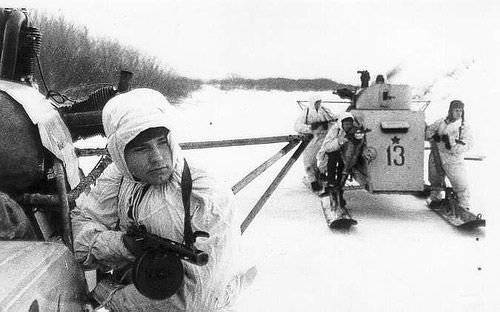
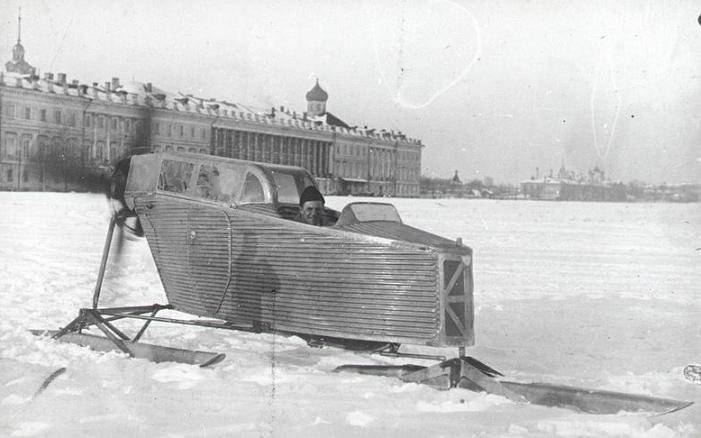
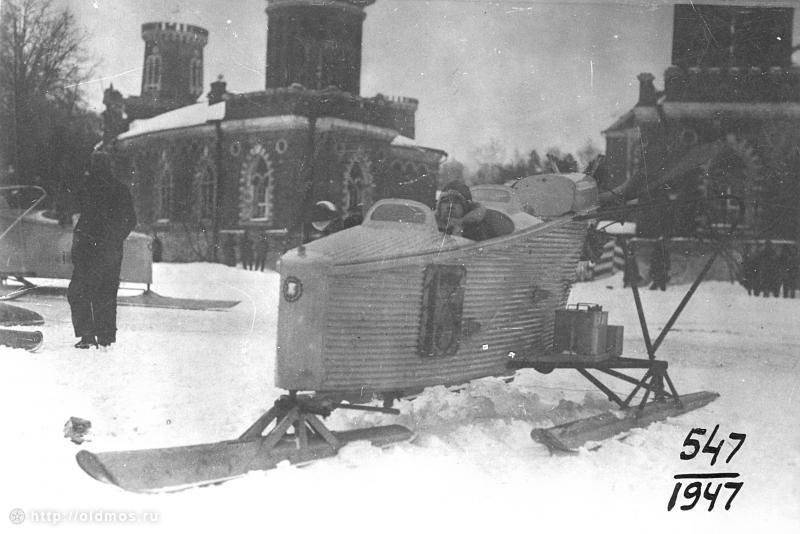
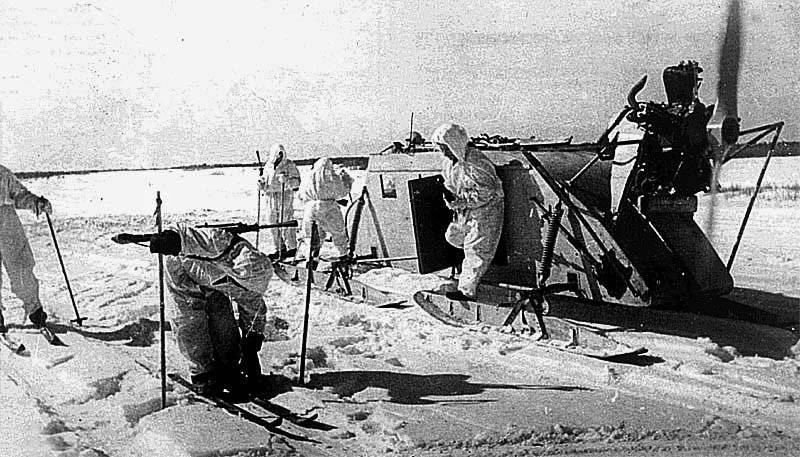
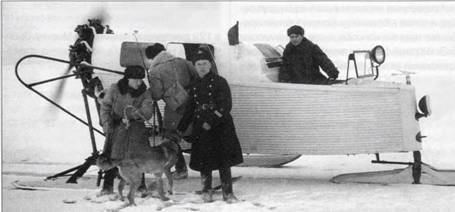
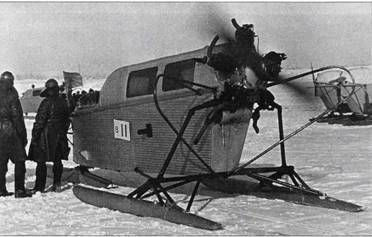
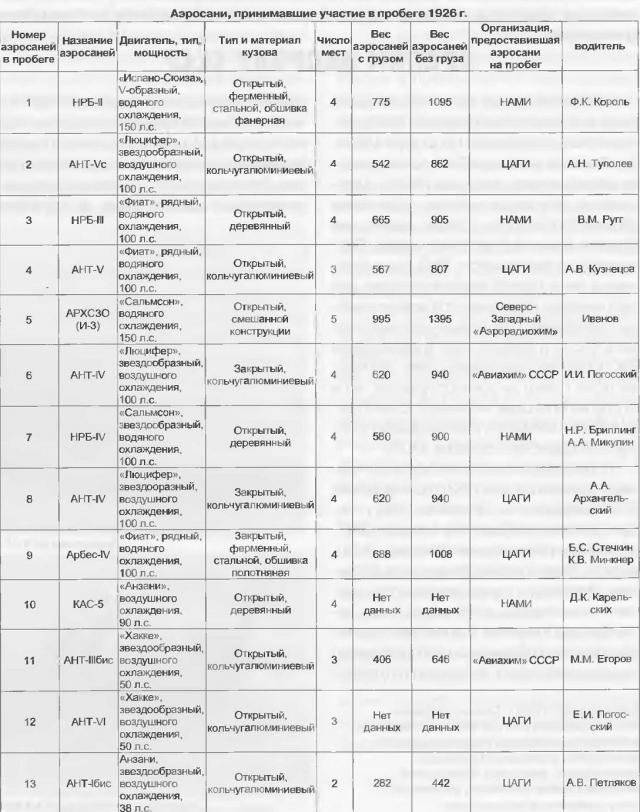
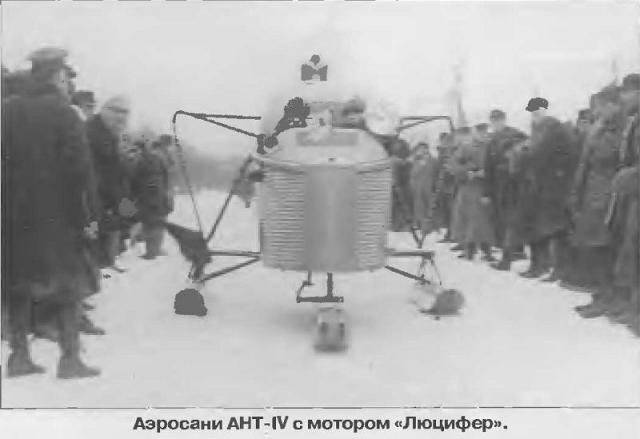
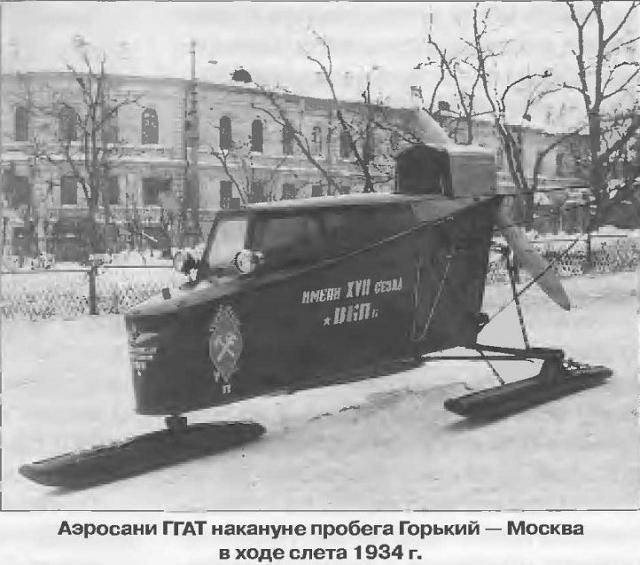
Information